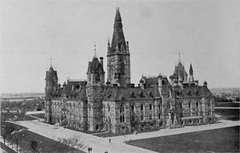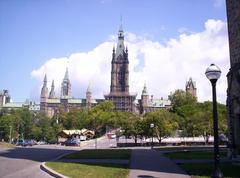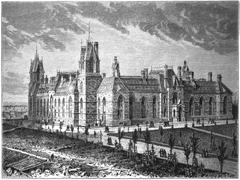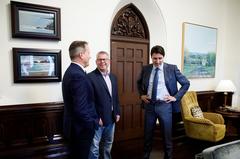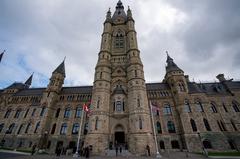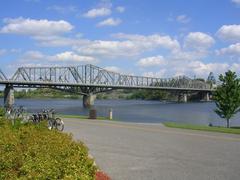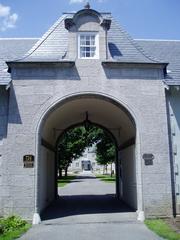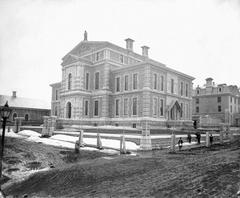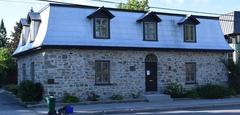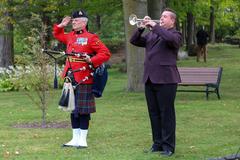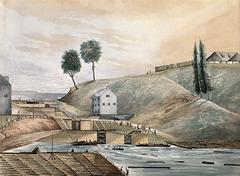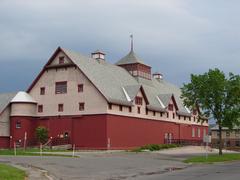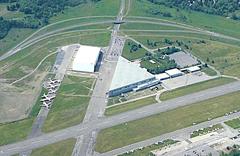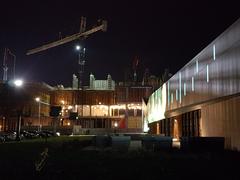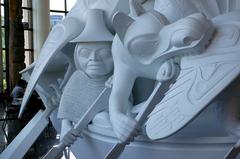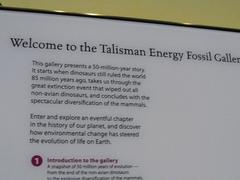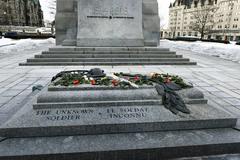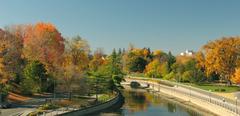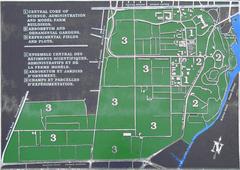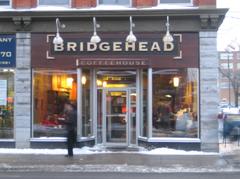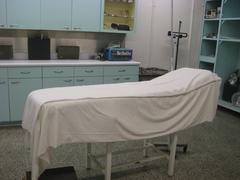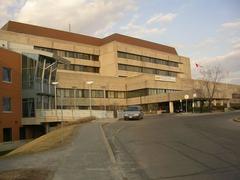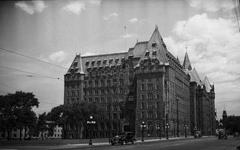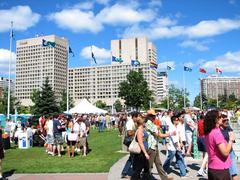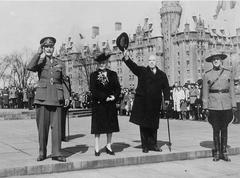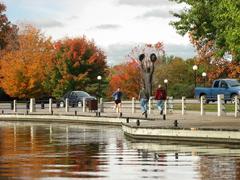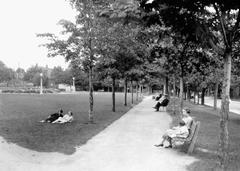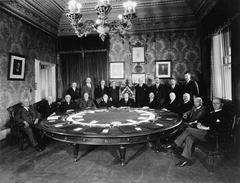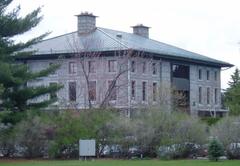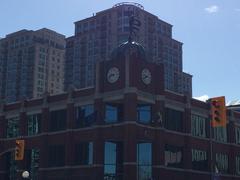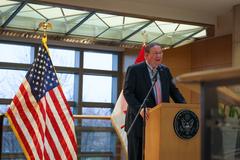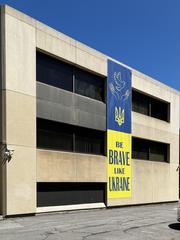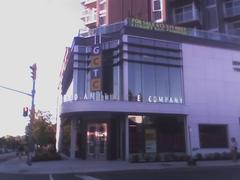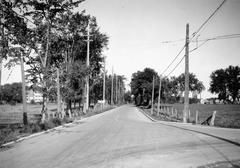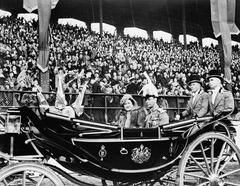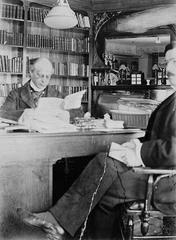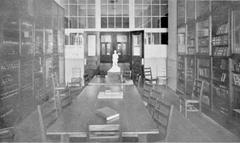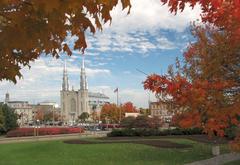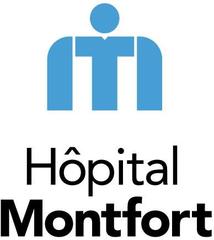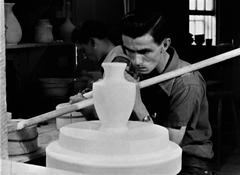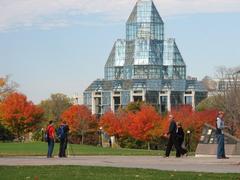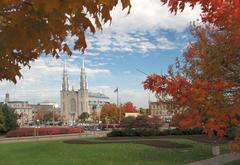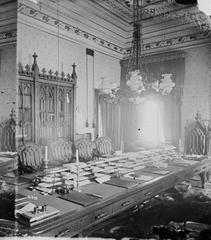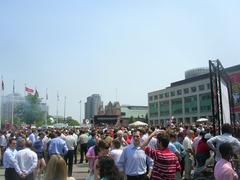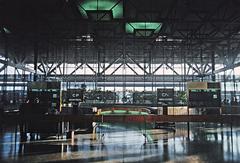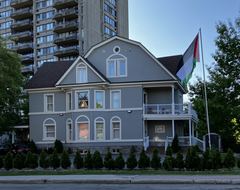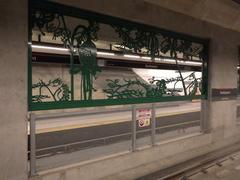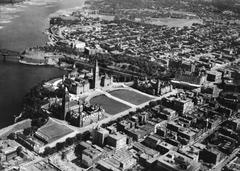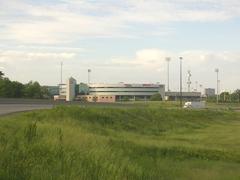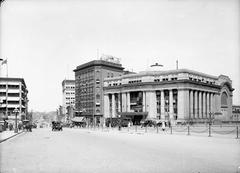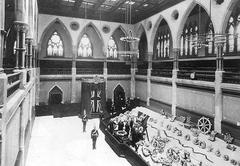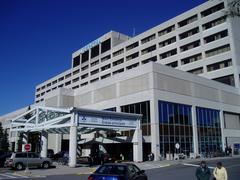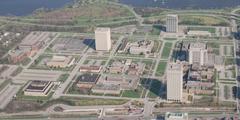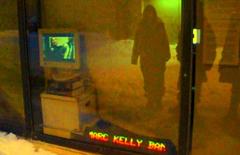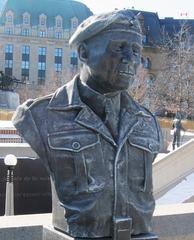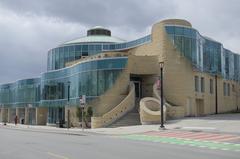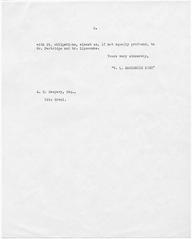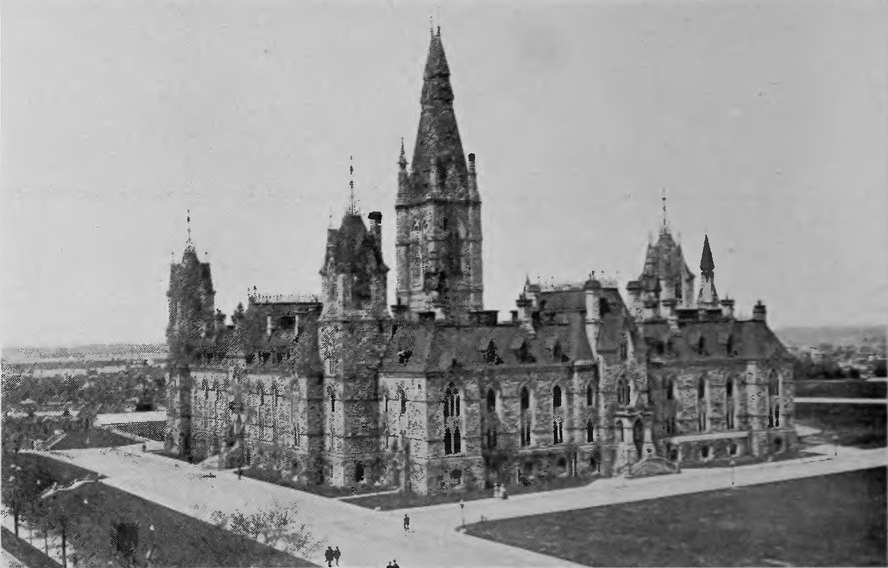
West Block Ottawa: Visiting Hours, Tickets, and Historical Sites Guide
Date: 14/06/2025
Introduction
Situated at the heart of Parliament Hill in Ottawa, the West Block is a cornerstone of Canada’s political and architectural heritage. Completed between 1859 and 1865, this High Victorian Gothic Revival structure has witnessed the evolution of Canadian democracy, serving as a government office and, more recently, as the interim home of the House of Commons. The West Block seamlessly blends restored 19th-century craftsmanship with innovative 21st-century engineering, offering visitors a unique perspective on the past and present of Canadian governance. This comprehensive guide details the West Block’s historical significance, architectural features, visiting hours, ticketing, accessibility, and practical tips to ensure a memorable experience for all visitors (Parliament of Canada Visitor Information; Ottawa Citizen; Canada.ca).
Table of Contents
- Introduction
- Historical Overview
- Architectural Features and Heritage Value
- The West Block’s Role in Canadian Democracy
- Visiting the West Block: Essential Information
- Frequently Asked Questions
- Visuals and Media Suggestions
- Plan Your Visit
- References and Further Reading
Historical Overview
Origins and Early Development
Parliament Hill occupies a site of longstanding significance. Before Ottawa’s designation as the capital, the limestone bluff overlooking the Ottawa River served as a landmark for Indigenous peoples and later as a military hub known as Barrack Hill (audiala.com). With Ottawa’s selection as capital in 1857, plans were laid for a parliamentary complex, including the West Block.
Construction on the West Block began in 1859, following a design competition won by Thomas Stent and Augustus Laver. The building was completed in 1865, just prior to Confederation, featuring a robust Gothic Revival style with locally sourced Nepean sandstone, pointed arches, and elaborate stone detailing (pc.gc.ca).
Expansion and Restoration
As Canada’s government grew, so did the West Block. Major expansions in 1874–1878 and 1906–1909 adhered to the original Gothic Revival vision, adding new wings and office space while maintaining architectural harmony (pc.gc.ca). The building underwent significant renovations in the 1960s to modernize infrastructure, and a comprehensive restoration from 2005 to 2018 addressed both structural integrity and heritage conservation, culminating in the transformation of the courtyard into a glass-roofed interim chamber for the House of Commons (Ottawa Citizen).
Architectural Features and Heritage Value
The West Block is a prime example of mid-19th-century Gothic Revival architecture. Key features include:
- Nepean sandstone walls with contrasting Ohio and Potsdam sandstone trim
- Mansard roofs clad in weathered copper
- Towers, turrets, and pointed gables lending a dramatic silhouette
- Intricate ironwork and original wood finishes in select interiors
- The glass-roofed House of Commons Chamber, a modern intervention that preserves the historic courtyard walls while introducing natural light and innovative engineering (pc.gc.ca)
The restoration project prioritized heritage conservation, exposing original masonry within the new chamber and using Canadian materials such as wood and steel in contemporary additions.
The West Block’s Role in Canadian Democracy
Since Confederation, the West Block has provided offices for MPs, ministers, and government departments. After the devastating fire of 1916 destroyed the original Centre Block, the West Block became even more vital to parliamentary operations (canadavisa.ae). In 2019, it assumed a new role as the interim seat of the House of Commons, with the glass-roofed chamber hosting debates and legislative proceedings (Canada.ca). The innovative adaptation underscores the building’s enduring relevance and symbolizes transparency in Canadian governance.
Visiting the West Block: Essential Information
Visiting Hours
- Summer (May–September): 9:00 AM – 10:00 PM
- Winter (October–April): 9:00 AM – 5:00 PM
- Guided tour hours vary and are subject to parliamentary sessions and special events. Always check the official Parliament of Canada visitor page for the latest information.
Tickets and Admissions
- Admission: Free for all visitors
- Guided tours: Strongly recommended; reserve tickets in advance online via the Parliament of Canada booking system. A limited number of same-day tickets may be available at the entrance on a first-come, first-served basis (Ottawa Tourism).
- ID Requirement: Government-issued photo ID required for all visitors as of April 2025.
Guided Tours and Accessibility
- Tour length: 45–60 minutes, available in English and French
- Content: History, architecture, parliamentary procedures, and access to the interim House of Commons Chamber
- Accessibility: Fully accessible with elevators, ramps, accessible washrooms, and arrangements for visitors with mobility needs. For special requirements, contact Tenant Operations or 613-943-4300 at least 24 hours in advance
- ASL/LSQ interpretation: Available with two-business-day advance notice at 613-996-0896 (Parliament Visit Planning)
Security and Visitor Tips
- Security screening: Mandatory and similar to airport procedures; arrive at least 25 minutes early
- Bag policy: One small bag per visitor (max. 35.5 cm x 30.5 cm x 19 cm). No bag check or storage available
- Conduct: Photography allowed in public areas unless otherwise indicated; demonstrations and disruptive behavior are prohibited
- Accessibility: The building is fully accessible and offers alternate security procedures for those with medical devices or special needs
- No food or drinks permitted inside the tour areas
Getting There and Parking
- Location: Wellington Street, downtown Ottawa
- Public transit: O-Train Line 1 and several OC Transpo and STO bus routes serve Parliament Hill (OC Transpo; STO)
- Parking: No public parking on-site; use nearby private or city lots (e.g., National Arts Centre, World Exchange Plaza)
Nearby Attractions
- East Block: Another Parliament Hill Gothic Revival landmark
- Library of Parliament: Renowned for its architecture and collections
- Centennial Flame: Iconic photo spot
- ByWard Market: Shopping and dining district nearby
- Rideau Canal: UNESCO World Heritage Site within walking distance
Frequently Asked Questions (FAQ)
Q: What are the West Block visiting hours?
A: Open year-round; 9:00 AM–10:00 PM in summer, 9:00 AM–5:00 PM in winter. Guided tours follow a separate schedule—check here for updates.
Q: How do I book tickets?
A: Reserve free tickets online via the Parliament of Canada booking system; same-day tickets may be available on-site.
Q: Is the West Block accessible for visitors with disabilities?
A: Yes, the building is fully accessible. Contact Tenant Operations for assistance at least 24 hours in advance.
Q: Can I take photos inside?
A: Photography is permitted in most public areas; some restrictions apply in sensitive zones.
Q: Are tours available in other languages?
A: Tours are offered in English and French. ASL/LSQ interpretation is available with advance notice.
Q: What is the bag policy?
A: Only one small bag per visitor. No food or drinks allowed.
Visuals and Media Suggestions
- High-resolution images of the West Block exterior, emphasizing the Gothic Revival architecture
Alt text: “West Block Parliament Hill facade with Nepean sandstone walls” - Interior shots of the glass-roofed interim House of Commons chamber
Alt text: “Temporary House of Commons chamber under glass roof in West Block” - Interactive map of Parliament Hill highlighting the West Block and nearby attractions
- Virtual tour links from the Parliament of Canada website
Plan Your Visit
Maximize your Parliament Hill experience by combining a guided West Block tour with visits to the East Block, Library of Parliament, and other Ottawa historical sites. For up-to-date details on tickets, accessibility, and events, consult the Parliament of Canada Visitor Information and consider downloading the Audiala app for audio tours and insider tips. Stay connected via social media for real-time updates and travel inspiration.
Summary and Key Tips
The West Block stands as an enduring symbol of Canadian democracy and architectural achievement. Its transformation from a 19th-century government office to a vibrant, glass-enclosed parliamentary chamber exemplifies the balance between historical preservation and modern innovation. With free, accessible guided tours, a central downtown location, and proximity to other national landmarks, the West Block is an essential stop for anyone exploring Ottawa’s history and civic life. Secure your tickets, prepare for security, and delve into Canada’s living heritage on your next visit (Parliament of Canada Visitor Information; Ottawa Tourism; Canada.ca).
References and Further Reading
- West Block Heritage Details - Parks Canada
- The Project of a Lifetime: Ottawa Citizen
- Discover West Block - Government of Canada
- Parliament of Canada Visitor Information
- Ottawa Tourism: Parliament Tours
- CanadaVisa: Parliament Hill Ottawa
- Architecture49: The West Block
